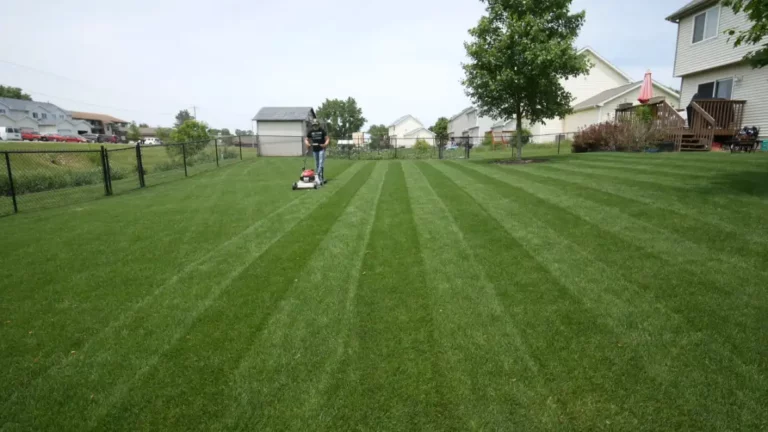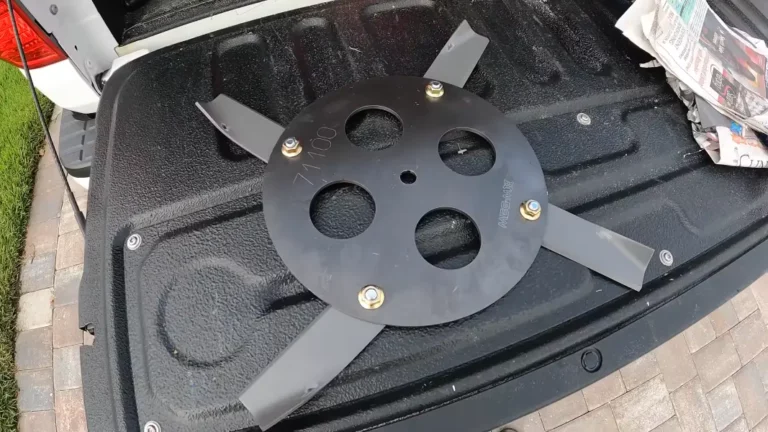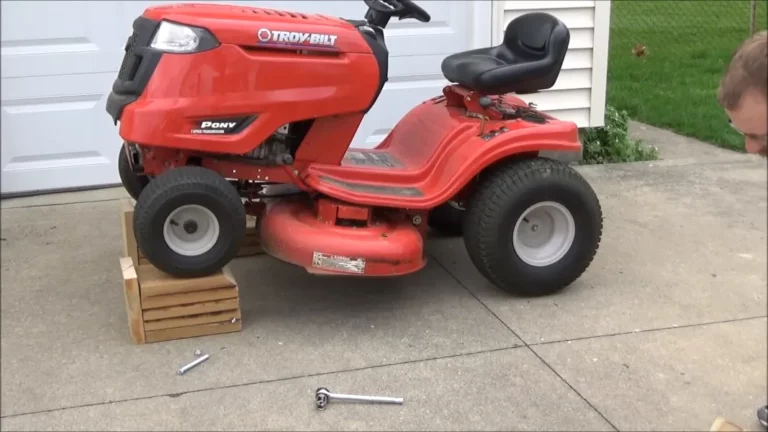Complete Guide on 3 Blade Mower Orientation
3-blade mower orientation involves how the three blades are arranged on the mower deck. While there’s no universal rule, it’s vital for lawn enthusiasts to find the best blade alignment for top-notch performance.
Manufacturers may suggest common positioning methods like Staggered or Parallel, but consulting your user manual or reaching out to the manufacturer is crucial.
This article will assist you to know the 3 blade mower orientation and proper blade maintenance which will boost your 3-blade mower’s efficiency, resulting in a beautifully manicured lawn.
What is The Ideal 3 Blade Mower Orientation?
Here are some key considerations for the ideal setup and maintenance of a 3-blade mower in a concise point format:
Blade Positioning
The blade positioning for a 3-blade mower can vary depending on the specific mower model and manufacturer. Most common recommendations are:
Staggered Positioning:
Many 3-blade mower decks recommend staggered positioning, with the center blade slightly forward compared to the outer blades. This helps achieve an even and uniform cut across the entire width of the mower deck.
Parallel Positioning:
Some sources suggest parallel positioning, where all three blades are aligned in a straight line, which is used on commercial mowers. While it can provide a uniform cut, staggered positioning appears to be more commonly recommended for residential mowers.
Alternating orientation: It is a versatile choice for homeowners looking to handle diverse lawn conditions. In this setup, the blades are staggered with one slightly forward and the other slightly backward. This combines the advantages of both staggered and overlapping orientations, offering an even cut and the ability to tackle challenging grass types.
Blade Height
- Set all three blades at the same height to ensure a consistent cut.
- Many manufacturers suggest setting the blade height of a 3-blade mower in the mid to high range. This typically means setting the cutting height between 3 and 4 inches. Taller grass shades out weed seeds, keeps the soil cooler, and promotes longer roots, which can help the grass withstand drought and reach nutrients.
- Different grass types may have specific recommendations for blade height. For example, zoysiagrass cultivars may have an ideal mowing height of 1 to 2 inches, while other grass types may have different preferences. It is best to consult specific recommendations for your grass type.
Blade Sharpness
- Regularly sharpen the blades to maintain cutting efficiency.
- Dull blades can lead to uneven cuts and lawn damage.
Blade Balance
- Ensure proper blade balance to prevent vibration and mower damage.
- Balance blades by removing excess material to achieve equal weight distribution.
Regular Maintenance
- Clean the mower deck to prevent grass buildup.
- Check for loose or damaged parts and replace as needed.
- Lubricate moving components per manufacturer’s guidelines.
- Routine maintenance prolongs the mower’s lifespan and ensures optimal performance.
Why 3 Blade Mower Orientation is Important?
The orientation of the blades on a 3-blade mower can have an impact on the quality of the cut and the overall performance of the mower. Here are a few reasons why blade orientation is important:
1. Even and Uniform Cut
- Proper blade orientation is crucial for achieving an even and uniform cut across the entire width of the mower deck.
- When the blades are aligned correctly, they work together to cut the grass evenly, preventing the formation of uncut patches or an inconsistent lawn appearance.
2. Reduced Vibration
- Correct blade orientation contributes to reduced vibration during mower operation.
- Balanced and properly positioned blades minimize the likelihood of excessive vibration, which can be uncomfortable for the operator and potentially lead to damage to the mower’s components.
3. Efficient Grass Discharge
- Blade orientation can impact the way grass clippings are discharged from the mower deck.
- When the blades are correctly aligned, they help direct grass clippings to the discharge chute or bagging system more effectively.
- This prevents clogging issues and ensures efficient disposal of grass clippings, reducing the need for frequent stops to clear blockages.
4. Optimal Performance
- Manufacturers set the blade orientation during assembly to achieve the best possible performance for a specific mower model.
- Following the recommended blade orientation guidelines ensures that the mower operates as intended and delivers optimal cutting results.
- Deviating from the manufacturer’s recommendations may result in subpar performance, increased wear and tear, and decreased overall efficiency.
Frequently Asked Questions [FAQs]
What is 3-blade mower orientation?
3-blade mower orientation refers to the arrangement and positioning of the three blades on the mower deck to achieve the best cutting performance.
Should all three blades be parallel to each other?
Not necessarily. While some mowers may benefit from parallel positioning, many 3-blade mowers require staggered positioning, with the center blade slightly forward compared to the outer blades.
Can I change the orientation of my 3-blade mower?
Yes, you can change the orientation of your 3-blade mower. Most mowers allow you to adjust the blade positions to achieve different orientations.



